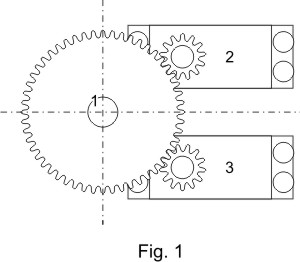What does "double servo-drive" mean
While stabilizing the swinging camera, the servo-drive must often change the direction of rotation. The camera experiences the jolts of small amplitude as the result of operation of the servo-mechanism. Even if one succeeds to eliminate flickering of the camera through the digital processing of the video-material, the view precision still worsens, particularly in case of shooting in insufficient lighting and the elongated exposure of the shot. The amplitude of undesired oscillation is related with the following reasons: the sum of clearances in the gearbox of the servo-drive, the sum of clearances in the places of coupling of the support, insufficient rigidness of the construction, delay of the servo-mechanism's reaction towards the signals of the sensors of positioning. Swinging of the camera, increased by the servo-mechanism, is one more drawback, which often occurs. The video-camera does not stop at the expense of inertia in the set point after rotation because the mass of the video-camera is considerable. The servo-mechanism starts to rotate the camera towards the set position as the result of which swinging increases.

The purpose of the invention: To reduce the undesirable oscillation of the video-camera in case of usage of the servo-drive. The task is solved as follows: two servo-drives are installed on each axle of rotation. The servo-drives operate synchronically in the course of rotation of the camera, but, being in the neutral position, they create an extra loading in the opposite directions. As the result of it, the clearances in the transmission become compensated and the jolts become eliminated at the moment of change of the direction of rotation. Besides, delay of the reaction towards the control signal also reduces.


